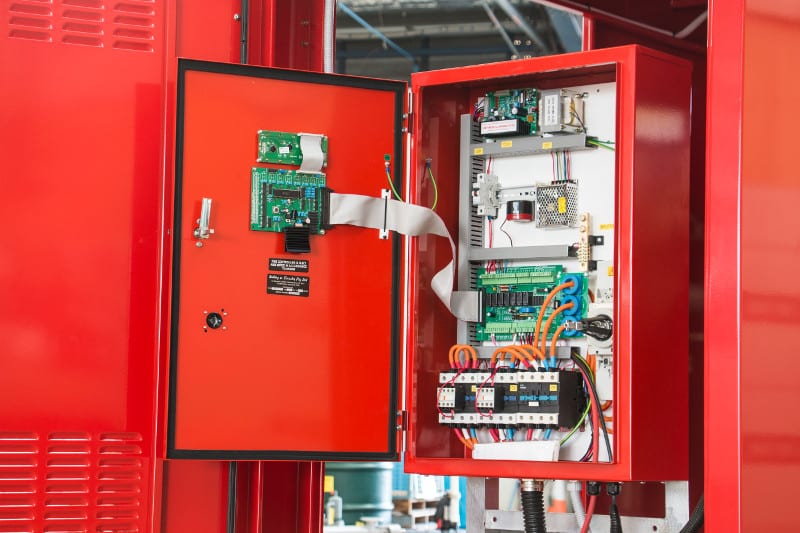Blog
Tag: NFPA 20

What is a fire pump controller?
May 25, 2022In simple terms, a fire pump controller is a device to reliably start and stop a fire pump, as well as monitor conditions in an ongoing manner that could hinder or prevent the proper operation of a fire pump. They act the same way any motor controller operates, except they are built with more strict…
Future Safety Features in Fire Pump Controllers – Master Controls
November 16, 2020We are often interested in directing industry attention to important future advancements in fire protection. Today’s topic pertains to new safety features that include an effective and creative solution to minimizing the dangers of arc flash in fire pump controllers. For the purposes of this article, we will be discussing electric fire pump controllers.
2016 Changes to the NFPA 20
February 4, 2016Steven Brown presented to the AFSA Mid-Atlantic Chapter on NFPA 20, and the changes between the 2013 and 2016 editions in Newark, DE on January 21, 2016. While covering the changes to the 2016 edition, Steven also discussed key items from each chapter that while not necessarily new, are certainly often overlooked or misunderstood. A…
Steven Brown & Associates Now Offers Peerless Pumps
November 12, 2015We’re excited to announce that we’ve added one of the largest manufacturers of vertical pumps to our existing line of quality and reliable products. In our efforts to better serve our customers, Steven Brown & Associates now proudly offers Peerless Pump fire pumps, drives, controls, accessories, and more. A recognized leader in the fire pump…
Choosing the Right Fire Pump
October 29, 2015There are a large variety of fire pumps available in the market today, fabricated by several different manufacturers. Many in the industry are interested mainly in the hydraulic performance of the pump in question – specifically the gallons per minute (US GPM) and the pressure boost (US PSI) of the pump. If a pump can…
Examples of Proper Fire Pump Equipment Installations
March 23, 2015Whether it is through a new fire pump sale or from a service or repair troubleshooting call, we see a lot of fire pump mechanical rooms. Occasionally we see an installation of new fire pump equipment which catches our eye in a good way — that is, the installing contractor did an exemplary job with…
Fire Pump Testing Part II – Hose Valve Manifold vs Flow Meter
May 28, 2014This blog is the finale of our two-part series, where we continue discussing the testing of fire pumps, and we now switch our focus to the use of a flow meter device. In our second half of the series we’ll dive into the advantages and disadvantages to using flow meters instead of the hose manifold…
Fire Pump Testing – Hose Valve Manifold vs Flow Meter
April 16, 2014This week we embark on a two-part segment where we’ll cover fire pump testing, comparing the advantages and disadvantages of two different methods of testing water flow during a fire pump test: external water flow through a hose valve manifold on the exterior of a building, versus a flow meter recirculating loop within the mechanical…
How are Engines and Motors Sized for Fire Pumps?
February 20, 2014Another question we get pretty frequently here at Steven Brown & Associates, Inc. is how are engines and motors sized for fire pumps? In order to determine the sizing of motors and engines for Aurora fire pumps, we refer to the guidelines put forth by the U.L., as well as in Factory Mutual’s Approval Standard…
Do I Need a Main Relief Valve on Diesel Fire Pumps?
October 18, 2013One of the more common misconceptions we see when it comes to diesel fire pumps is that you are no longer required to have a main relief valve, also incorrectly referred to as a relief valve in some cases, for your fire pump installation. In order to comply with the National Fire Protection Association’s code…
- 1
- 1-10 of 10 results